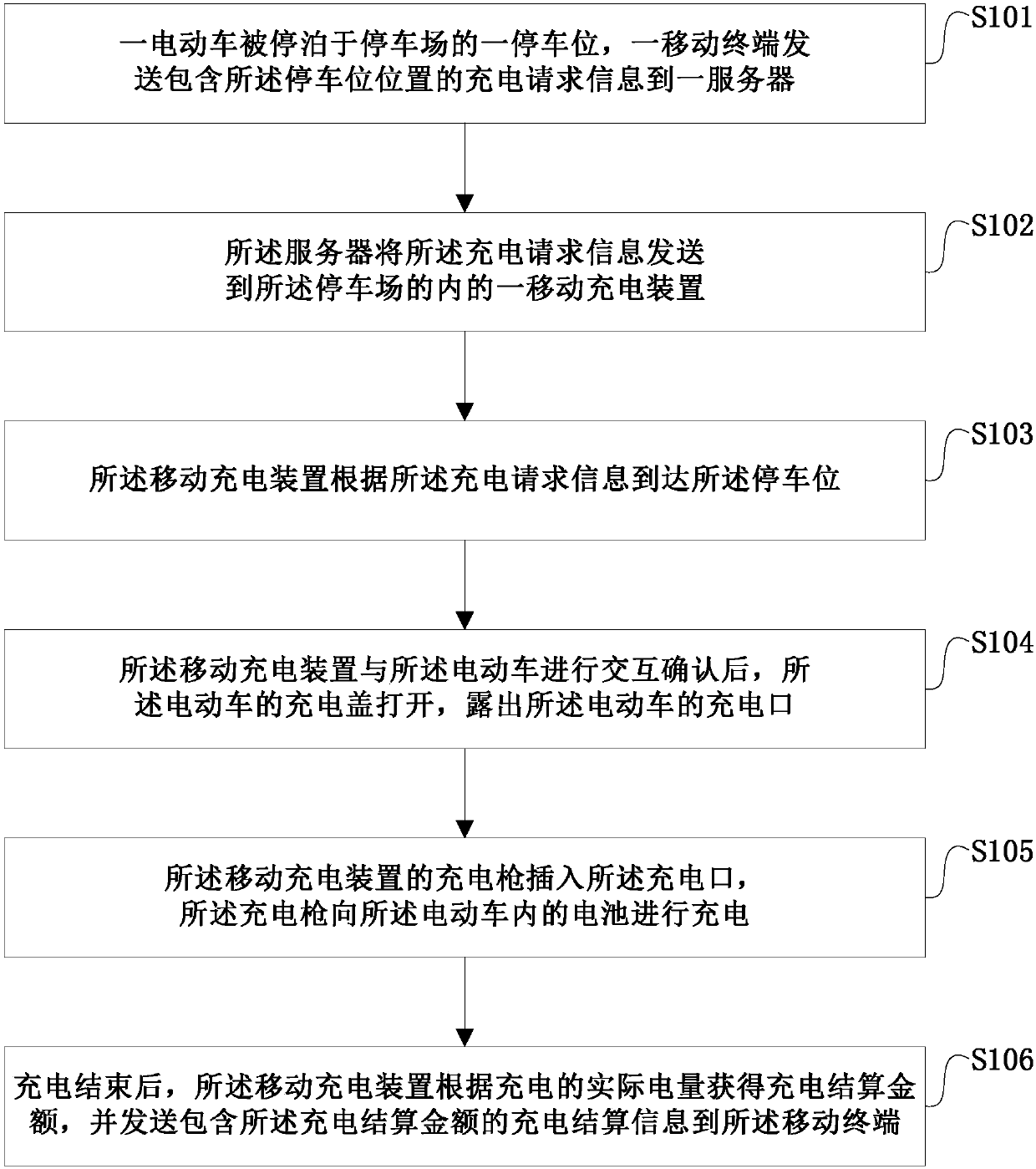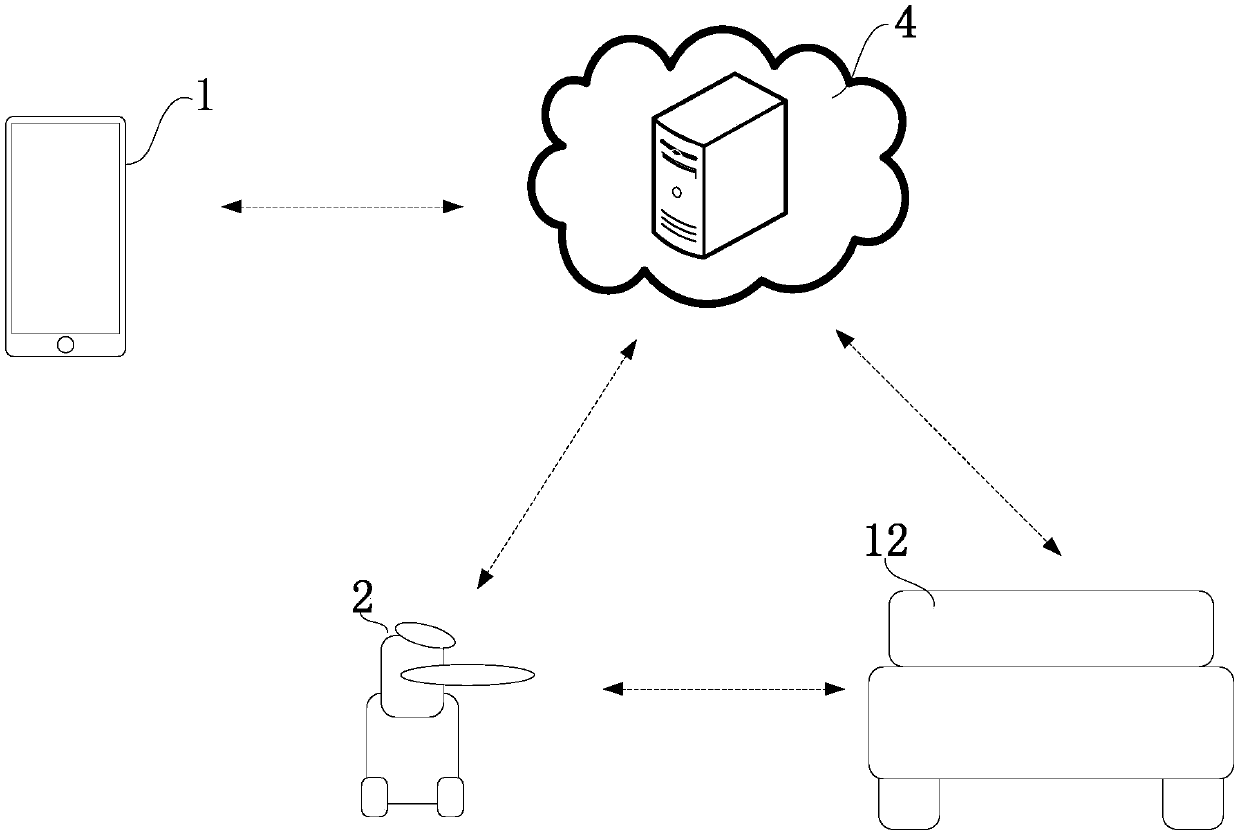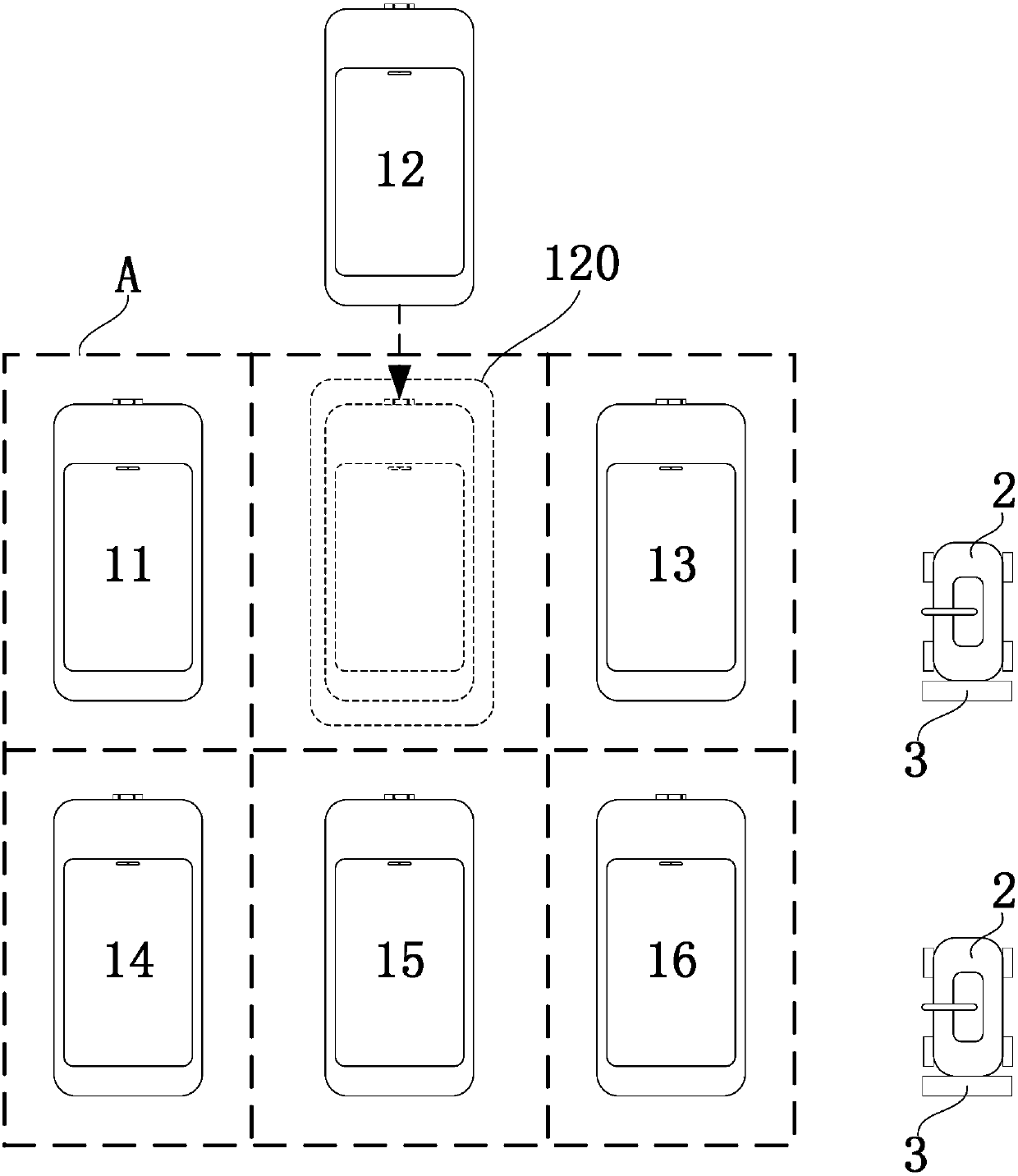Method, system and equipment for charging electric vehicle in parking lot and storage medium
A technology for electric vehicles and parking lots, which is applied in the direction of electric vehicle charging technology, electric vehicles, battery/battery traction, etc., and can solve problems such as occupancy, unfavorable promotion of electric vehicles, and high electricity bills
- Summary
- Abstract
- Description
- Claims
- Application Information
AI Technical Summary
Problems solved by technology
Method used
Image
Examples
Embodiment Construction
[0039] Example embodiments will now be described more fully with reference to the accompanying drawings. Example embodiments may, however, be embodied in many forms and should not be construed as limited to the embodiments set forth herein. Rather, these embodiments are provided so that this disclosure will be thorough and complete, and will fully convey the concept of the example embodiments to those skilled in the art. The same reference numerals denote the same or similar structures in the drawings, and thus their repeated descriptions will be omitted.
[0040] figure 1 It is a flow chart of the method for charging electric vehicles in the parking lot of the present invention. Such as figure 1 As shown, an embodiment of the present invention provides a method for charging an electric vehicle in a parking lot, comprising the following steps:
[0041] S101. An electric vehicle is parked in a parking space in a parking lot, and a mobile terminal sends charging request info...
PUM
 Login to View More
Login to View More Abstract
Description
Claims
Application Information
 Login to View More
Login to View More - R&D
- Intellectual Property
- Life Sciences
- Materials
- Tech Scout
- Unparalleled Data Quality
- Higher Quality Content
- 60% Fewer Hallucinations
Browse by: Latest US Patents, China's latest patents, Technical Efficacy Thesaurus, Application Domain, Technology Topic, Popular Technical Reports.
© 2025 PatSnap. All rights reserved.Legal|Privacy policy|Modern Slavery Act Transparency Statement|Sitemap|About US| Contact US: help@patsnap.com



